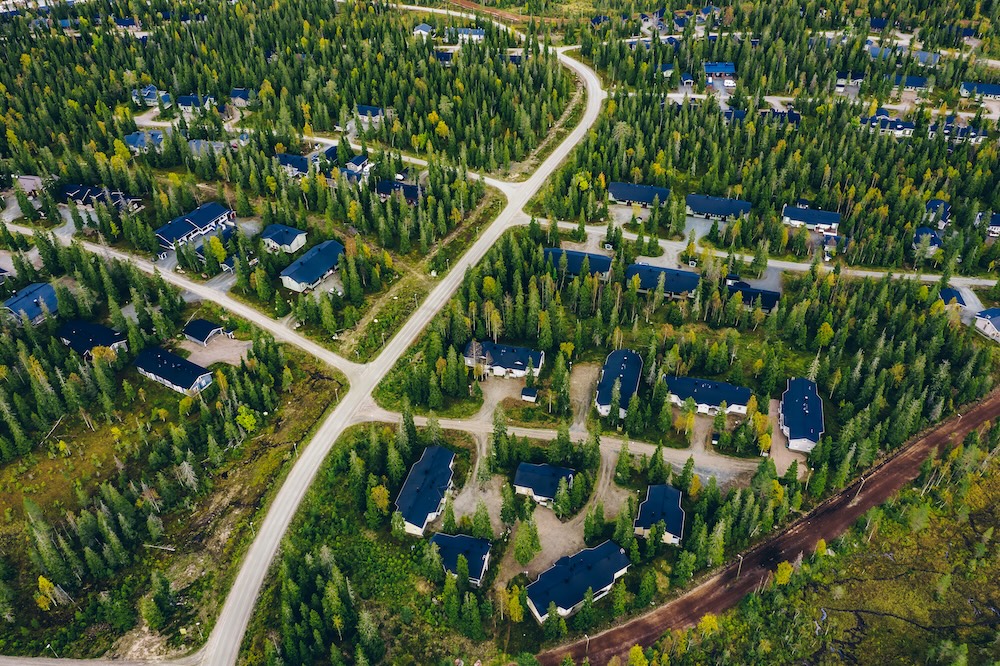As wildfires intensify in a heating world, your home may be more vulnerable than you think. From California to Hawaii, Australia to Greece, fire season has become a year-round threat — and traditional building practices are no longer enough.
But there’s good news: we can adapt. Whether you live near forest, grassland, or even the suburbs, there are simple, proven ways to reduce wildfire risk through smarter home design, resilient landscaping, and community awareness. This guide explores how.
Why Wildfires Are More Destructive Now
Climate change is making wildfires bigger, faster, and more unpredictable. This is due to:
- Hotter temperatures drying out soil and vegetation
- Prolonged drought conditions in many regions
- Stronger winds and shifting weather patterns
- More homes built near wildlands (the wildland-urban interface)
- Accumulated fuels from years of fire suppression policies
Together, these factors are turning ordinary landscapes into flammable terrain — putting homes, lives, and entire ecosystems at risk.
How Homes Actually Catch Fire
Contrary to popular belief, it’s not usually a wall of flames that destroys homes. The biggest danger is wind-blown embers — tiny burning particles that can travel up to a mile ahead of the main fire front. They ignite homes by landing on:
- Dry leaves in gutters
- Flammable mulch near foundations
- Wooden decks and fences
- Attic vents and crawlspaces
Once ignited, flames can spread quickly and overwhelm fire crews. That’s why defensible space and fire-resistant design matter so much.
Fire-Ready Home Design: What You Can Do
Wildfire-safe homes aren’t futuristic or expensive. In many cases, they’re just better planned — using practical materials, smart spacing, and a better understanding of how fire behaves.
Clear the Ignition Zone (0–5 Feet)
This is the most important zone to defend. Most fires start here — where embers land close to walls, windows, and doorways.
To reduce risk:
- Replace flammable mulch with gravel, decomposed granite, or river rock
- Keep this zone free of vegetation, firewood, and clutter
- Trim grasses and remove dry leaf piles regularly
- Use hardscape borders or patio spaces instead of plant beds
Case in Point: The Lahaina House That Didn’t Burn
In the 2023 Maui wildfires, one red-roofed home in Lahaina stood unburned while nearly everything around it was destroyed. One notable detail? A three-foot ring of river rocks around the house, replacing mulch and dry vegetation. While no single feature can guarantee protection, this example shows how thoughtful landscaping can dramatically reduce risk.
Use Fire-Resistant Materials
If you’re building or renovating, prioritize non-combustible materials. Some of the best choices include:
- Metal or tile roofing instead of wood shakes
- Fiber cement or stucco siding
- Double-pane, tempered glass windows
- Metal mesh vents to keep out embers
- Enclosed eaves and decks with ignition-resistant materials
Even small upgrades — like replacing wood fencing that attaches to your house — can help slow or stop fire spread.
Landscape with Fire in Mind
Plants matter. Some are highly flammable (like juniper, pine, and eucalyptus), while others resist ignition and retain moisture.
Guidelines for fire-smart landscaping:
- Choose native or low-flammability plants
- Space shrubs and trees to avoid fire “laddering” from ground to roof
- Keep tree limbs trimmed at least 10 feet from your home
- Use non-combustible borders and stone features where possible
- Avoid decorative bark, shredded rubber, or resinous mulch near structures
Protect Your Roof and Gutters
Because embers land on roofs, this is a major ignition point:
- Clean gutters regularly to remove dry debris
- Install gutter guards or screens
- Choose ignition-resistant roofing (metal, clay, composite shingles)
- Add ember-resistant vent covers and attic screens
- Block gaps in roof edges, attic spaces, and soffits where sparks can enter
Plan for Power and Water Interruptions
In fire-prone areas, utilities often fail before or during a fire:
- Keep extra water stored or use rain barrels where allowed
- Install backup battery or solar systems for water pumps or alarms
- Know where your hose, ladder, and fire extinguisher are at all times
- Practice evacuation and emergency communication plans with family or neighbors
What Indigenous Fire Stewardship Adds
Long before wildfire became a modern crisis, Indigenous communities across the world practiced controlled cultural burning — using low-intensity fires to manage vegetation, prevent buildup of fuels, and restore ecological balance.
Key lessons include:
- Fire can be a tool for healing and protection
- Mosaic-style burning creates natural firebreaks
- Working with seasonal rhythms and plant cycles improves outcomes
- Viewing fire as a relationship, not an enemy, changes how we manage risk
Indigenous fire stewardship is not just history — it’s a living science. Today, scientists and land managers are beginning to relearn what Indigenous fire practitioners have known all along: fire belongs here, but we must use it wisely.
Why This Matters More Every Year
No place is immune. Fires are now happening in areas previously considered safe — from Canada’s boreal forests to the hills outside Los Angeles, and even near urban centers.
Adapting to wildfire is part of climate resilience. Whether you rent or own, live in the suburbs or the woods, understanding how to fire-harden your surroundings can help:
- Save lives
- Reduce insurance losses
- Protect your community
- Prevent climate displacement
Final Thoughts: We Can’t Eliminate Fire — But We Can Live With It
Wildfire is not going away. But catastrophe isn’t inevitable. By combining modern building science, smart landscaping, and traditional Indigenous knowledge, we can build homes and communities that are ready for what’s coming.
Preparedness isn’t fear — it’s empowerment. Fire doesn’t just destroy. It teaches.









Reader Interactions